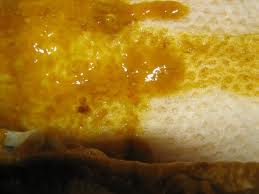The first time you see blood in the stool, you should call your doctor. If your child is still in diapers, save the diaper with the bloody stool so that the doctor can see the color of the blood and where it is relative to the stool.
If your child has recurrent bloody stools, what you do will depend on the cause of the problem. Constipation, causing an anal fissure, is treated with stool softeners and lubrication. A food allergy is treated by avoiding the offending food. You and your doctor will come up with a plan depending on your child’s underlying issue.
When does my doctor need to be involved?
If your doctor anytime you see blood in the stool for the first ne. Even if you have seen blood in the stool before, you should contact your doctor if you see copious amounts of blood or if our child is pale, lethargic, or significantly irritable.
 What are the treatments?
What are the treatments?
The treatment always depends on the source of the bleeding. Infections associated with bloody stools are rarely treated unless they also cause significant illness, either by spreading to other parts of the body or by leading to dehydration. But certain infections — such as a parasite or the bacteria C. difficile — do need to be treated with specific medicines.
Inflammation along the bowel wall may need to be treated if it is severe or if it is associated with a systemic illness. Steroids are strong anti-inflammatory medicines that can help to heal the bowel lining. Although steroids are exceptionally helpful in treating inflammatory disorders, they are necessary only in a small subset of children.
If an obstruction or intussusception is the cause of blood in the stool, the bowel must be released. This requires either an enema using a liquid visible on X ray (called a barium enema) or surgery.
Anal fissures can be treated with a lubricant, such as petroleum jelly (Vaseline), applied to the anus. This will help a subsequent stool slide out without re-injuring the torn skin. Stool softeners and a diet oriented toward softening the stool will help address constipation, thereby reducing the bulk of the stools passing through the anus. Anal fissures (and constipation in general) can be very hard to treat in toddlers. It can be difficult to convince a strong-willed child that pooping will actually make things better when the child is well aware that it was pooping that caused the pain in the first place. Such circumstances can lead to a cycle of constipation and re-injury to the anal skin.